Centauri Dreams
Imagining and Planning Interstellar Exploration
Posting Problems
Marc Millis’ article “Star Trek, Star Tech,” posted on Friday, has been taken down temporarily due to server problems that are now being investigated. As soon as I get these ongoing site maintenance issues resolved, the article will be reposted.
The Enzmann Solution
Yesterday I remarked on how many more tools for exoplanet discovery we have today than were available to Harry Stine when he wrote “A Program for Star Flight” in 1973. That same day came the disheartening news that the Kepler mission has been stopped in its tracks by an equipment malfunction. But take heart — a vast amount of data already gathered by Kepler remains to be studied, meaning we’ll be getting Kepler discoveries for some time to come. The Kepler news also sharpens our focus on TESS (Transiting Exoplanet Survey Satellite), which will build our catalog of nearby stars hosting exoplanets, with launch now scheduled for 2017.
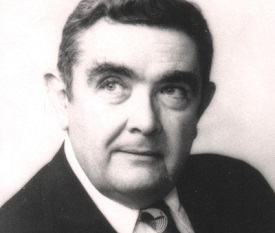
For more on Kepler, see Dennis Overbye’s Breakdown Imperils NASA’s Hunt for Other Earths. But back to Stine, who in 1973 was hunting not only for target exoplanets but also for a propulsion system that would get a human crew to them. He was evidently familiar with Eugen Sänger’s papers on photon rockets, in which the German designer proposed deflecting the gamma rays produced by the annihilation of matter with antimatter to produce thrust. But Sänger’s ideas depended on tuning the gamma ray photons into a directed beam, something that no one could figure out how to do. Stine pondered the idea but rejected it.
Image: Author and rocketeer G. Harry Stine. Credit: New Mexico Museum of Space History.
And although George Marx and Robert Forward had already been examining pushing a large sail with a laser (Forward’s work went back to the early 1960s), Stine seems unaware of it. In any case, he was a rocket man, and it was perhaps inevitable that it would be Project Orion that drew his attention. Nuclear pulse propulsion would detonate a fission bomb behind the vehicle to drive it forward, using enormous shock absorbers to cushion the craft. Theoretical work led by Ted Taylor showed that the principle was sound, and simple tests using chemical explosives were conducted near San Diego, but the Nuclear Test Ban Treaty ended the project in 1963.
I mentioned yesterday that Freeman Dyson, a major player in the Orion research, would go on to publish a 1968 paper that took Orion to the next level, using thermonuclear devices to drive the spacecraft. Dyson’s ultimate craft was capable of speeds of 10,000 kilometers per second, enabling a mission to Alpha Centauri with deceleration at the destination in 130 years. I imagine it was Dyson’s starship that fired the imagination of Robert Duncan-Enzmann, then at Raytheon Corporation, leading to a modified and extended Orion that Stine would use in his article.
Adam Crowl, working with Kelvin Long and Richard Obousy, has produced an excellent overview of the Enzmann design that appeared in the Journal of the British Interplanetary Society last year (reference below). What I’m doing here is looking at Stine’s use of Enzmann as reflected in his Analog article, in which he foresees fleets of Enzmann starships dispatched in a regular pattern of interstellar exploration. The Enzmann vessel is distinctive, as the illustration below shows, a long cylinder capped by a 1000-foot sphere made up of 12 million tons of frozen deuterium, the fuel for its eight Orion-style propulsion modules.
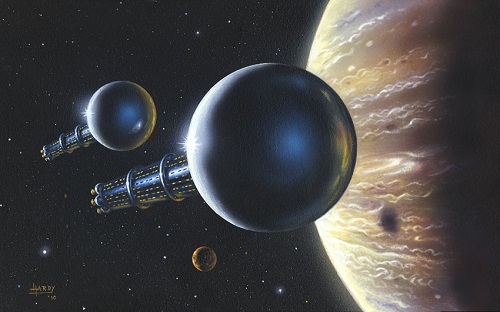
Image: The Enzmann starship as envisioned by the space artist David Hardy. This painting was commissioned by Kelvin Long in 2011 to depict a scene Hardy had first painted in the 1970s.
This was one big vessel, a cylinder 300 feet in diameter and 1000 feet long. Stine points out that a Saturn V without the Apollo escape tower would lie sideways inside this cylinder, which contains nearly a half-million cubic feet of living space. The Empire State Building, New York’s iconic symbol, would fit lengthwise easily enough with just its top tower sticking out the end. But the Enzmann vessel wasn’t, in many ways, a single ship. Stine explains:
The cylindrical portion is made up of three identical cylindrical modules docked end to end. Each module is completely self-sufficient with its own auxiliary nuclear power plant, a closed ecological life support system, living quarters, communication equipment, repair shops, storage holds, and EVA landing craft.
Each drum-like module is built upon a central core 50 feet in diameter and 300 feet long. Covering this backbone are eight decks of sub-modules each measuring 10 feet by 10 feet by 23 feet. These sub-modules are used as living quarters, storerooms, laboratories, and recreational areas by the human crew. Each of the drum-like modules has 700 of the smaller sub-modules.
And so on. The Enzmann starship, during the long coasting part of its journey, would be spun-up around its longitudinal axis to provide artificial gravity for the people on board. Enzmann thought a crew of 200 would be about right, with plenty of room for growth to an optimum population of 2000, a figure that balances against the closed-cycle ecology of the ship. Preserving the balance of population around this figure leads to what Stine calls ‘fascinating problems in applied social engineering.’ Indeed. This is, in fact, perhaps the biggest unknown variable of the mission.
Because Stine thought in terms of ships traveling together, his ultimate expedition would be about the size of a small city of 20,000 or so dispersed through ten starships. Modules and sub-modules could be disassembled during cruise if necessary and attached to another ship, with all parts designed to be interchangeable. Each ‘star fleet’ would launch what Stine called ‘metaprobes’ to move ahead of the main body for advanced reconnoitering of the target.
I mentioned at the outset of this series on 1970s starship projects that among some designers, at least, it was a time of immense optimism. We saw that in Bob Forward’s aggressively ambitious plan for exploration as presented to a subcommittee of the U.S. House. We also see it in spades in Stine’s thinking, making this theme a good note on which to close. Stine believed interstellar travel was possible through the laws of known physics and that it would not involve one-way trips but continued waves of exploration with frequent return to Earth. He goes on:
For expeditions out to about eight light-years, the original crew has a very good chance of returning; with advances in geriatrics and longevity research, we may have a synergistic relationship here that would make star flight out to quite respectable distances something that could be accomplished within a single lifetime. Naturally, some people aren’t ever going to come back to Earth again, but things like that seldom stop motivated people. My own ancestors never saw their native Germany again after making a short 3,000-mile sea voyage a couple of hundred years ago; but I’ve been back several times. In fact, our intrepid interstellar explorers stand a much better chance of getting there and getting back than many terrestrial explorers up to and including Twentieth Century men.
What an era. To Stine, the 1970s in relation to starflight looked like a time that paralleled the 1930s, when the first experiments in rocketry were producing results and we were learning how to reach into the stratosphere. He thought starflight was a mere 40 or so years away, a sentiment that seems all too naïve today given the amounts of energy that would need to be produced, but one that by its fierce commitment to the future can still be inspiring. We will do well to try to keep Stine’s enthusiasm alive even as we tackle the vast propulsion challenges that confront us.
For more on the designs of Robert Duncan-Enzmann, see Crowl, Long and Obousy, “The Enzmann Starship: History & Engineering Appraisal,” JBIS Vol. 65, No. 6 (June, 2012).

Harry Stine: Building the Infrastructure
Before getting started on today’s post, a reminder that Tau Zero founder Marc Millis and I will be among those interviewed on the History Channel show Star Trek: Secrets of the Universe tonight at 10 PM Eastern US time (0200 UTC on Thursday). Many of the ideas discussed on that show parallel those found in Harry Stine’s program for interstellar exploration. Stine drew on the work of Stephen Dole, whose 1964 book Habitable Planets for Man identified 14 stars within a distance of 22 light years in the spectral classes between M2 and F2. Dole thought there was a 43 percent probability of at least one habitable planet around one of these 14 stars, and Stine’s interstellar program began with a series of probes that would investigate them, looking first for gas giants.
The idea is that a gas giant flags the presence of other, smaller planets, key information in Stine’s day. Forty years later, we know how to find gas giants through radial velocity and transit studies. It’s true that ‘hot Jupiters’ are relatively straightforward to find because of their pronounced radial velocity signature, but in coming decades we’ll have the technology in place to characterize entire solar systems using space- and ground-based instruments. Unmanned probes won’t be sent just to send back a ‘ping’ when they find a gas giant, as Stine would have it. They’ll be highly intelligent scientific stations that will give us a continuing presence in the destination system.
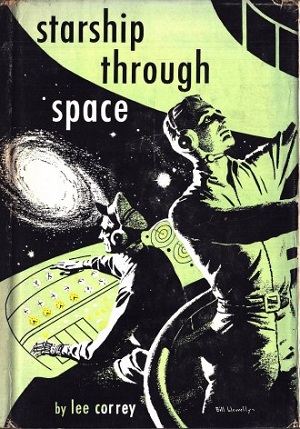
Stine, who died in 1997, was a familiar figure in science fiction and rocketry circles in the latter half of the 20th Century. A physics major at the University of Colorado in Boulder, he moved on to work at White Sands Proving Grounds and later became head of the Range Operations Division at the U.S. Naval Ordnance Missile Test Facility. His later career included employment at several aerospace companies in addition to numerous books. At left is the cover of his 1954 novel Starship Through Space, which went into depth on the operations of a star-faring vehicle in every respect save its propulsion system, which remained unexplored.
But propulsion is starflight’s greatest challenge, and two decades later it would be Project Orion that caught Stine’s eye. I have no idea when the first mention of Orion appeared in a science fiction magazine and I’ll ask this site’s resident SF gurus to help me out with this one. But Stine’s 1973 article in Analog is the first non-fiction treatment of Orion I’m aware of in the SF magazines.
Stine was taken with the idea of detonating nuclear or thermonuclear devices behind the craft, cushioning the blow with shock absorbers and using the explosion itself to drive the vehicle forward. He knew, too, that Dandridge Cole had played around with still more efficient nuclear-pulse designs that contained the explosion inside a huge spherical chamber, the benefit here being that venting the explosion through a rocket-like nozzle allows you much higher thrust and specific impulse. Says Stine:
Containing the explosion of a thermonuclear device may be a staggering idea to most people, but to an engineer it is just numbers. Give the idea to an engineer, and he’ll design it with an adequate safety factor and also determine how to make it. Engineers don’t get excited by big numbers or big gadgets.
Well, some engineers don’t, though I know many an engineer who would quail at the thought of building some of the Stine-era concepts routinely discussed by the likes of Cole, Gerard O’Neill and Robert Forward. But Stine seems to have drawn the line at Cole’s ideas, seeing an Orion-like propulsion system built in Earth orbit as the best solution. As to radiation, a 20-year development program of a newly awakened Orion project would give us the expertise to routinely work with nuclear materials in orbit, and a space environment in which, Stine notes, “the average small solar flare burps out more radiation than our largest conceivable thermonuclear device,” would forestall the objection of dangerous side effects to the planet.
Those gas giants I mentioned earlier weren’t to be identified solely because they flagged the presence of smaller worlds. Stine also saw them as what he called ‘interstellar filling stations’ for refueling starships. The point here is that a true program for interstellar exploration has to go beyond one-shot missions. What Stine envisioned was making starflight into a continuing effort of exploration and colonization, and that meant return capability as well as refueling for continuing on to other systems if desired. Although it doesn’t appear in his notes, I’m assuming that Freeman Dyson’s 1968 paper “Interstellar Transport,” which uses the early Orion work as the basis for a thermonuclear, interstellar Orion, played a role in Stine’s thinking.
Putting the Orion technology to work involved interstellar expeditions made up of fleets of between three and ten starships traveling together, on journeys lasting up to 100 years. With multiple target stars, we’re talking about a series of such fleets, each constructed using space-based resources that would feed off the new industries of resource extraction Stine assumed were a logical next step as we moved past the Moon and Mars. In fact, sustaining and growing that kind of infrastructure is in his view one of the reasons for starflight in the first place. See his book The Third Industrial Revolution (Putnam, 1975) for more.
Project Orion, terminated by the Nuclear Test Ban Treaty of 1963, left the concept of nuclear-pulse propulsion hanging, but Robert D. Enzmann, then working at Raytheon Corporation, went on to develop conceptual engineering designs for the starship Orion could become. I’ll close this three part series on Stine’s “A Program for Star Flight” tomorrow with a look at the Enzmann starship, a design that is seeing renewed interest in the interstellar community.

A Program for Star Flight
We become so bedazzled by the assumptions of our time that we can forget how things looked in different eras. 1973 wasn’t all that many years ago in the cosmic scheme of things, but the early ’70s were a time of surprising optimism when it came to our future in space. As we saw yesterday, physicist Robert Forward laid out a plan for interstellar expansion to a subcommittee of the U.S. House of Representatives in 1975, even as a thoughtful Michael Michaud worked out his own concepts in a series of papers in the Journal of the British Interplanetary Society. But nudging ahead of both men by a few years was G. Harry Stine.
Already making a name for himself as a science fiction writer under the pseudonym Lee Correy, Stine was a futuristic thinker who fired readers’ imaginations with a cover article in the October, 1973 Analog, an issue whose artwork I reproduce here. Rick Sternbach’s cover caught my eye when I first saw this issue while toiling as a grad student that year, but it was the Stine article, “A Program for Star Flight,” that made me move the magazine to the top of my ‘must read’ list, even though I had little time for reading outside my class work.
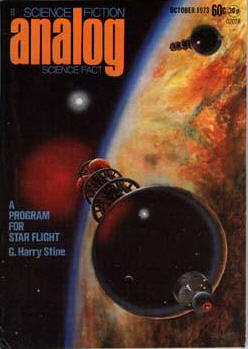
Stine wanted to examine starflight by starting with “what we know now or with things that are amenable to engineering development.” This is Bob Forward’s spirit being channeled by Harry Stine, a look for solutions within known physics that pushed engineering as hard as it could be pushed, assuming that future developments would allow the production of the huge amounts of energy demanded. Stine didn’t want to pick up science fiction tropes he considered over the top, like faster-than-light travel or cryo-preservation. He thought in terms of huge ships and trips that lasted for generations.
In most respects, we’re still in the Stine era, in the sense that while we’ve learned a great deal about the stars around us and have made huge advances in computer technology, our basic methods of reaching space — chemical rocketry — are still in place despite the intervening 40 years. Project Icarus exists partly to look at what changes have occurred in this period to make starflight a more practical proposition, but it’s a daunting fact that we’re still trying to light fusion in a sustainable and productive way and we certainly don’t have it yet for propulsion.
Image: Rick Sternbach’s cover art depicting an Enzmann starship, as discussed in Harry Stine’s article.
But it’s interesting to look at Stine in another way. For in this article he lays out a basic justification for going to the stars that emerged at a time when the Apollo program had triggered serious blowback from those who wanted all our resources to be applied to Earth’s problems first. So let’s look at Stine’s list and see how his own rationale for starflight stands up from our vantage point today. I’ll go through all eight of his points in the order presented.
- Species survival. Stine worried about two things, the most likely being that through our own actions, we might destroy our ecosystem and have to find a new home. The other possibility was that the Sun might show signs of becoming unstable. Today we’d relegate that latter point to a distant future, one far enough out (at least a billion years) that it wouldn’t demand action in the near future. And more than solar instability, we’d be worried about the Sun simply playing out its normal life sequence, warming and eventually swelling into a red giant rather than going nova. On the question of planetary protection from space debris as a motivator for deep space technologies, Stine has no comment.
- Information. Just before the dawn of the personal computer revolution, Stine believed that information was the key to survival, and that the more of it we had, the better able we would be to thrive as a culture. I tend to think in terms of information being its own reward, with the quest for knowledge being simply hard-wired into our species, but Stine was a more hard-headed individual who saw accumulating data as an insurance policy against future catastrophe.
- Life search. Stine’s view was that our exploration of the Solar System might reveal life, and that this would be a driver for making us want to search around other stars. Conversely, finding no life might equally become a driver as we looked for further evidence that we were or were not alone. Today we still have no proof of life elsewhere in the Solar System, but we certainly have more targets than Stine did — beyond Mars, we’re looking at Enceladus, Titan, Europa, and even distant Triton, among other possibilities — and a growing understanding that life may be able to emerge in conditions that in Stine’s day would have seemed impossible.
- Intelligence search. Still no confirmed signal from SETI, and I suspect that Stine would have thought one was likely by now. But he opines that it may take going out to the stars and looking to discover whether or now other civilizations exist. Remember, too, that his was a time without the proliferating population of exoplanets we’re finding with our new tools and techniques, one in which there was still some thought that sending a probe was the only way to observe the planets around other stars. Today we’re expanding SETI to include searches for large-scale engineering (Dyson spheres and more) and each day seems to bring a new exoplanet discovery.
- Lebensraum. Here it’s hard to say whether Stine sees a crowded and choked Earth getting population relief from starflight — an unlikely scenario — or whether he means that future colonists will have all the room they could imagine for future growth. The latter is obviously true and we can envision substantial settlements moving into the outer system and beyond, but my assumption is that problems of overcrowding on Earth will demand Earth-based solutions.
- Sociological research. I like this one because Stine is envisioning generation ships with thousands of inhabitants and the ‘laboratories’ of social change they will provide. The point is well-taken, for long before we think about human colonists to the stars we may be looking at large space colonies in artificial habitats. The more of these that appear the greater the spread of human interactions in settings that will become isolated as they move further from the Sun.
- Ideological reasons. Harking back to the settlement of New England, Stine notes that people are willing to endure hardships to support their various ideologies. Viable colonies in space and, eventually, generation ship possibilities will become a powerful inducement for people to follow their own notions and establish communities that exemplify them.
- Economics. Here I can imagine several researchers I know who’ve looked hard at the cost of interstellar travel choking — aren’t we talking about trillions of dollars at this point to send spacecraft to the stars? Well, there are somewhat cheaper alternatives, and of course we’re looking for technology advances that can lower the astonishing cost of the energy we’ll need. But when Stine wrote, the profit motive keyed off the history of exploration on our planet and seemed a rational possibility. Today we’d say that turning a profit on an interstellar voyage is perhaps the least likely reason for constructing a starship.
Here’s Stine’s take on the eight items:
These are general reasons, and I won’t attempt to assign priorities to them or even try to guess which one, if any, will be the final justification used. I refuse to do this because I have a built-in cultural bias. I am an American who speaks and thinks in the English language and who has an Anglo-Hellenic cultural heritage. Star flight may be accomplished by another culture for reasons that would seem absurd to Americans. In other words, don’t assume that star flight won’t be done because we have lost our nerve, drive, or ambition — because you are speaking strictly of our culture. When it comes time to go, those who man the starships may be from a renascent culture on the make with fire in their guts.
My own take on Stine’s list is that the earlier items are the main drivers we can identify with today. I’ve mentioned the quest for knowledge for its own sake, a seemingly essential component of human nature. But that needs coupling with species survival. Stine doesn’t go into the matter but I’ve advocated in these pages that building our space infrastructure as a means of planetary protection will inevitably lead to deep space technologies that will boost our expansion beyond the Solar System. If so, our exoplanet discoveries — and particularly finding biomarkers in exoplanet atmospheres, which we may do within a matter of decades — would constitute a compelling reason to put a payload around another star to continue the investigation up close.

Roadmap to the Stars
Tau Zero founder Marc Millis and I will be among those interviewed on the upcoming History Channel show Star Trek: Secrets of the Universe, which will air this Wednesday at 10 PM Eastern US time (0200 UTC on Thursday). Being a part of this production was great fun, especially since it meant flying out to Oakland for a visit with my son Miles, who is now actively involved in interstellar matters. On long car trips when he was a boy, I would have Miles read Heinlein, Andre Norton and the like aloud while I drove — terrific memories — so you can imagine what a kick it is to see him as mesmerized by the human future in space as I am.
The idea of getting a payload to another star seemed closer in the days of those car trips. I’m sure that’s because we were coming off the successful Apollo program and assumed that a similarly directed effort could push us rapidly to the edge of the Solar System and beyond. It was in 1975, the year of the Apollo-Soyuz Test Project (the last time an Apollo flew) that Robert Forward introduced a singularly aggressive idea, an interstellar roadmap that he presented to the Subcommittee on Space Science and Applications of the House Committee on Science and Technology, which had requested proposals outlining possible future steps in space.
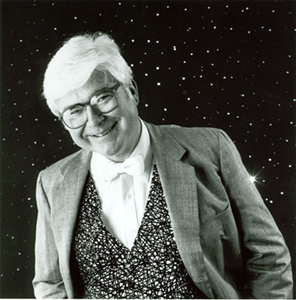
Forward called the proposal “A National Space Program for Interstellar Exploration.” Although it was published as a House document, it never received much by way of media attention and was never up for consideration by Congress. It says something about both Forward and the optimism of at least some in the space community that his proposal was so far-reaching. Consider this excerpt:
A national space program for interstellar exploration is proposed. The program envisions the launch of automated interstellar probes to nearby stellar systems around the turn of the century, with manned exploration commencing 25 years later. The program starts with a 15-year period of mission definition studies, automated probe payload definition studies, and development efforts on critical technology areas. The funding required during this initial phase of the program would be a few million dollars a year. As the automated probe design is finalized, work on the design and feasibility testing of ultra-high-velocity propulsion systems would be initiated.
Image: Interstellar theorist Robert Forward, wearing one of his trademark vests. Credit: UAH Library Robert L. Forward Collection.
Let’s pause there for a moment to consider that Forward was talking about the first launch of an automated interstellar probe somewhere around the year 2000, with the first manned missions beginning in 2025. The date reminds me of my friend Tibor Pacher, who heads up the Faces from Earth project, and who challenged me to take him up on our interstellar bet, which you can read about on the Long Bets site. The prediction is that ‘the first true interstellar mission, targeted at the closest star to the Sun or even farther, will be launched before or on December 6, 2025…’ Tibor supports that statement while I challenge it, but either way a good cause wins: If I’m right, the Tau Zero Foundation collects our $1000; if Tibor wins, it goes to SOS-Kinderdorf International, a charity dedicated to orphaned and abandoned children.
But back to Forward in Congress. Imagine the reaction of lawmakers reading on in the scientist’s proposal:
Five possibilities for interstellar propulsion systems are discussed that are based on 10- to 30 year projections of present-day technology development programs in controlled nuclear fusion, elementary particle physics, high-power lasers, and thermonuclear explosives. Annual funding for this phase of the program would climb into the multibillion dollar level to peak around 2000 AD with the launch of a number of automated interstellar probes to carry out an initial exploration of the nearest stellar systems.
And with the ‘damn the torpedoes’ optimism that always marked Bob Forward, he finishes this introduction with:
Development of man-rated propulsion systems would continue for 20 years while awaiting the return of the automated probe data. Assuming positive returns from the probes, a manned exploration starship would be launched in 2025 AD, arriving at Alpha Centauri 10 to 20 years later.
Now that’s moving — Alpha Centauri in 10 years would have to mean you’re getting pretty close to 50 percent of lightspeed at cruise, taking into account the necessary deceleration upon arrival. Forward’s own work would later include an Epsilon Eridani mission concept using a laser-beamed lightsail that would reach 30 percent of lightspeed, one that would be built in a ‘staged’ configuration so as to allow not only deceleration into the Epsilon Eridani system but eventual crew return to Earth. So the man thought big and his ideas were as bold as they come.
Michael Michaud, who would have been developing his ideas at roughly the same time, published a lengthy plan for moving out into the Solar System and beyond to the nearest stars in the Journal of the British Interplanetary Society in 1977, a program I want to talk about soon. But first, we need to address a slightly earlier program for interstellar flight written by G. Harry Stine and published in the science fiction magazine Analog in 1973. Stine not only had big ambitions, but he thought he knew just the kind of starship to propose for the job. We’ll talk about Stine’s “A Program for Interstellar Flight” tomorrow.
Forward’s presentation to Congress can be found in “A National Space Program for Interstellar Exploration,” Future Space Programs 1975, vol. VI, Subcommittee on Space Science and Applications, Committee on Science and Technology, U.S. House of Representatives, Serial M, 94th Congress (September, 1975).

The Growth of Interstellar Organizations
The British Interplanetary Society was founded way back in 1933, and included such luminaries as Arthur C. Clarke and Val Cleaver among its early membership. The Institute for Interstellar Studies (I4IS), also based in London, was founded in 2012 and is not, to the best of my knowledge, yet incorporated. Between the two dates and mostly emerging in the first decade of the 21st Century are a number of organizations that in one way or another focus on what I call ‘interstellar studies,’ meaning science and engineering dedicated to interstellar flight.
The trick becomes to keep everything straight. When I started writing my Centauri Dreams book back in 2002, the BIS was a clear model for what a small group of dedicated workers could achieve. It had produced a Moon mission concept as early as the 1930s and went on to create the first fully realized design for an interstellar craft, Project Daedalus. The BIS used the ‘red issues’ of its journal to focus on interstellar work while JBIS was otherwise devoted to a wide span of subjects involving astronautics and rocketry.
What we didn’t have in 2002 was the influx of enthusiasm that new organizations with a specifically interstellar focus have brought. This is where the occasional confusion arises, as I can attest from reading email questions from readers. Consider the sheer number of conferences that are suddenly available. Early in the year we had the Tennessee Valley Interstellar Workshop. Fast approaching is Starship Century in San Diego. In August it’s time for the Starship Congress hosted by Icarus Interstellar, while the 100 Year Starship project looks at a conference to be held in September.
I’m also told there is to be a London conference, presumably under the auspices of the Institute for Interstellar Studies, some time in the fall, and the BIS continues to have smaller conclaves at its London headquarters. I’ll cover all of these in these pages, of course, but you should also be aware that we’ve set up a calendar feature on the Tau Zero Foundation’s site that will keep you posted on events you may not otherwise have known about. Right after Starship Century, for example, is the ISDC 2013 Global Collaboration in 21st Century Space event, from May 23-27 at the La Jolla Hyatt Regency in San Diego. The calendar is just up and we’re only now populating it, but the idea will be to track down the major events and make sure they’re visible.
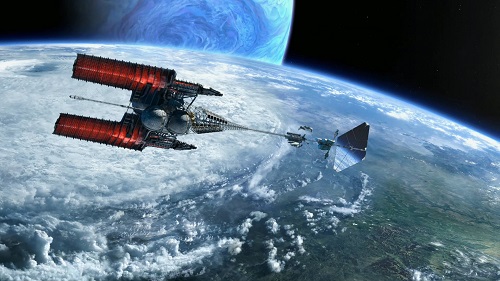
Image: The ISV Venture Star from James Cameron’s Avatar, one of Hollywood’s best realizations of futuristic starship design. The proliferating number of interstellar organizations may have as one effect more attention by filmmakers to creating plausible designs. Credit: 20th Century Fox.
I’ll likewise call your attention to our listing of the various interstellar organizations, published by order of incorporation, on the Tau Zero site. Regular Centauri Dreams readers will already know about Icarus Interstellar and I4IS, but you may want to scroll through the organizations to learn more about groups like Space GAMBIT, which was incorporated in 2012 and is supported by a $500 K DARPA grant. This one focuses on research that can be accomplished by what the group calls ‘hackerspace’ groups, clusters of enthusiasts working with shared tools in venues ranging from garages to clubs and college campuses.
And while you’ve heard me talk at times about my friend Tibor Pacher and his group Faces from Earth (founded in 2006), you may not be as aware of the Global Starship Alliance (GSA), whose goal is “…to launch a manned starship to the nearest potentially habitable exoplanet.” Beyond this is an agenda for improving life for our descendants: “Pursuing the challenge of interstellar travel will enhance the groundwork for a host of technologies that society needs today to ensure the sustainability of the Earth.”
And I’m almost certain you won’t know about the Interstellar Propulsion Society, which surfaced as a predecessor of the Tau Zero Foundation in the mid-1990s, dissolving with the advent of NASA’s Breakthrough Propulsion Physics project, only to re-emerge as Tau Zero when BPP funding was withdrawn and its head, Marc Millis, took early retirement to devote himself to interstellar studies. Then too we can’t forget old stalwarts like the Planetary Society, which does occasionally probe into interstellar realms, and certainly the scientists at the SETI Institute.
We’ve just gotten the list up and will add to it as we go, but I wanted you to be aware of it given the confusion I’m hearing from some readers about who is doing what at which conference. Over time, the hope here is that these things will settle down into a more sustainable schedule. But we can also enjoy the flurry of activity that accompanies the rise of new organizations, and hope that this enthusiasm burns bright as we attract a larger gathering to the fascinating study of starflight.


